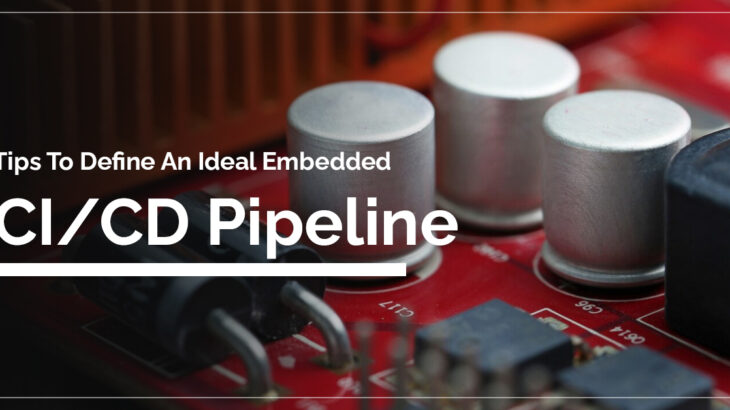
In the ever-evolving landscape of software development, implementing a robust Continuous Integration and Continuous Delivery (CI/CD) pipeline is crucial for ensuring efficient and error-free delivery of embedded systems. An embedded CI/CD pipeline streamlines the development process, and automated testing, and facilitates continuous integration, ultimately enhancing the overall software quality.
CI/CD Pipeline – Overview
A CI/CD pipeline constitutes a sequence of tasks or processes that need successful execution to release a fresh software version. Typically, embedded developers operated CI/CD pipelines manually and consumed considerable time. The modern understanding of a CI/CD pipeline emphasizes automation, streamlining the process to enable swift delivery of incremental software enhancements to end-users.
In essence, a standard CI/CD pipeline involves three fundamental actions: building, testing, and deploying the software. While the conceptual framework of pipelines is relatively simple, developers often encounter challenges in navigating the intricacies of the details.
How To Define An Ideal CI/CD Pipeline?
Before exploring the specifics of your optimal CI/CD pipeline, it’s crucial to emphasize that you shouldn’t let existing resources constrain your ideal CI/CD pipeline. Often, teams construct a CI/CD pipeline spanning quarters or years. Although achieving your ideal pipeline may seem unattainable, the tips below may help you define your ideal CI/CD pipeline and allow you to be aware of what you want to do.
An Ideal CI/CD pipeline should contain the following:
Build:
This job allows your firmware to generate binaries.
Analysis:
The analysis job is responsible for statically examining your code. This analysis typically encompasses factors such as code metrics, compliance with coding standards, and cyclomatic complexity, which may include adherence to MISRA, CERT, and style guides.
Testing:
The testing process will execute all necessary tests to validate your embedded code, encompassing unit, functional, integration, system, and performance tests.
Reporting:
The reporting task will aggregate outcomes from preceding jobs, offering details on build success, analysis findings, test coverage, results, and additional information.
Merge:
The merging process integrates the newly developed feature into the deployment branch upon successful completion of all related tasks. While traditionally involving human intervention, this step can also be automated.
Deployment:
Upon the successful completion of the merge job, the deployment job will initiate, commencing the field deployment process. Typically, the deployment phase interfaces with fleet deployment software, facilitating the seamless transmission of firmware to devices situated in the field.
The pipeline above represents the baseline that an embedded software team should strive to achieve at a minimum. Indeed, there’s room for incorporating other activities like simulation testing, hardware in-loop testing, and others. However, it’s essential to acknowledge that not every team may find these activities equally challenging. Choose Sunstream for embedded software development services through which we implement these additional activities by investing considerable time and effort. Upon reaching the envisioned ideal state, you can either sustain that configuration or further enhance it by integrating additional features perceived to bring value to both the team and the development process.




 +1.585.935.7123
+1.585.935.7123 +91-804-148-6861
+91-804-148-6861